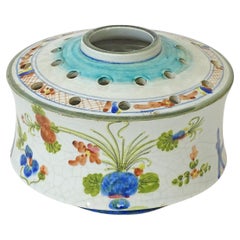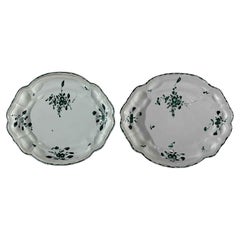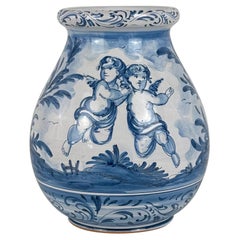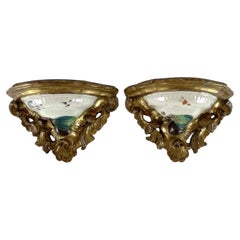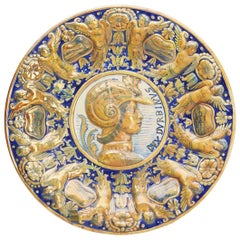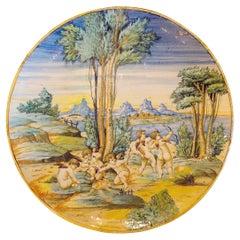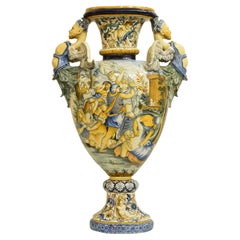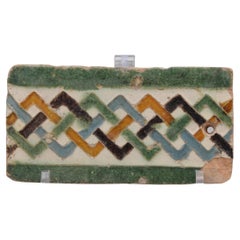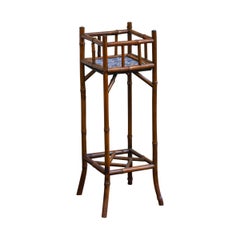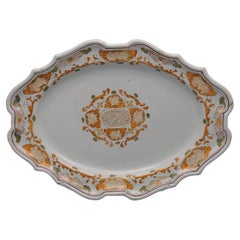Maiolica Furniture
19th Century European Antique Maiolica Furniture
Earthenware, Maiolica
Late 19th Century Italian Renaissance Antique Maiolica Furniture
Ceramic, Maiolica
Mid-19th Century Italian Antique Maiolica Furniture
Maiolica
16th Century Spanish Renaissance Antique Maiolica Furniture
Earthenware, Clay, Maiolica
Early 20th Century Maiolica Furniture
Maiolica, Bamboo
18th Century French Chinoiserie Antique Maiolica Furniture
Earthenware, Faience, Maiolica
Early 20th Century Spanish Islamic Maiolica Furniture
Earthenware, Faience, Luster, Maiolica
Mid-18th Century Italian Baroque Antique Maiolica Furniture
Maiolica
18th Century Italian Baroque Antique Maiolica Furniture
Maiolica, Pottery
2010s Italian Maiolica Furniture
Maiolica
19th Century Spanish Baroque Antique Maiolica Furniture
Earthenware, Faience, Luster, Maiolica
16th Century Spanish Renaissance Antique Maiolica Furniture
Earthenware, Maiolica
1950s Italian Mid-Century Modern Vintage Maiolica Furniture
Maiolica, Terracotta
Early 20th Century Italian Neoclassical Maiolica Furniture
Ceramic, Maiolica, Majolica
17th Century Italian Baroque Antique Maiolica Furniture
Earthenware, Faience, Maiolica
Late 17th Century Italian Baroque Antique Maiolica Furniture
Maiolica
Mid-20th Century Italian Rustic Maiolica Furniture
Maiolica
Late 17th Century Spanish Antique Maiolica Furniture
Ceramic, Earthenware, Faience, Maiolica
Mid-18th Century Italian Rococo Antique Maiolica Furniture
Maiolica
1920s Italian Art Nouveau Vintage Maiolica Furniture
Maiolica
16th Century Spanish Renaissance Antique Maiolica Furniture
Earthenware, Maiolica
1770s Italian Rococo Antique Maiolica Furniture
Maiolica
16th Century Spanish Renaissance Antique Maiolica Furniture
Earthenware, Maiolica
18th Century Italian Renaissance Antique Maiolica Furniture
Maiolica
1770s Italian Neoclassical Antique Maiolica Furniture
Maiolica
18th Century Italian Baroque Antique Maiolica Furniture
Earthenware, Faience, Maiolica
Early 19th Century German Art Nouveau Antique Maiolica Furniture
Maiolica
18th Century Italian Renaissance Antique Maiolica Furniture
Maiolica
19th Century Italian Antique Maiolica Furniture
Maiolica, Pottery
Late 19th Century Italian Renaissance Revival Antique Maiolica Furniture
Maiolica, Pottery
19th Century Italian Renaissance Antique Maiolica Furniture
Maiolica
Early 18th Century Italian Antique Maiolica Furniture
Ceramic, Maiolica
18th Century French Rococo Antique Maiolica Furniture
Maiolica, Porcelain, Pottery, Faience
Early 19th Century Italian Neoclassical Antique Maiolica Furniture
Maiolica, Giltwood, Canvas
1880s French Renaissance Revival Antique Maiolica Furniture
Maiolica
1770s Italian Rococo Antique Maiolica Furniture
Maiolica
16th Century Spanish Renaissance Antique Maiolica Furniture
Earthenware, Maiolica
1920s Italian Vintage Maiolica Furniture
Maiolica
Late 19th Century Antique Maiolica Furniture
Maiolica
16th Century Italian Renaissance Antique Maiolica Furniture
Maiolica
Early 20th Century Italian Baroque Maiolica Furniture
Maiolica, Porcelain
1950s Italian Mid-Century Modern Vintage Maiolica Furniture
Ceramic, Maiolica
Early 19th Century Italian Baroque Antique Maiolica Furniture
Iron
16th Century Spanish Renaissance Antique Maiolica Furniture
Earthenware, Maiolica
16th Century Spanish Renaissance Antique Maiolica Furniture
Earthenware, Maiolica
17th Century Italian Baroque Antique Maiolica Furniture
Porcelain, Maiolica
Early 18th Century Italian Antique Maiolica Furniture
Maiolica
Early 1700s Italian Baroque Antique Maiolica Furniture
Maiolica
1770s Italian Chinoiserie Antique Maiolica Furniture
Maiolica
16th Century Italian Renaissance Antique Maiolica Furniture
Maiolica
Early 20th Century Italian Baroque Maiolica Furniture
Maiolica, Porcelain
1770s Italian Rococo Antique Maiolica Furniture
Maiolica
1770s Italian Rococo Antique Maiolica Furniture
Maiolica
1770s Italian Baroque Antique Maiolica Furniture
Maiolica
19th Century British Victorian Antique Maiolica Furniture
Maiolica
Early 1700s Italian Baroque Antique Maiolica Furniture
Maiolica
18th Century and Earlier Italian Rococo Antique Maiolica Furniture
Maiolica
17th Century Italian Antique Maiolica Furniture
Maiolica
18th Century Italian Antique Maiolica Furniture
Maiolica
Early 1700s Italian Baroque Antique Maiolica Furniture
Maiolica
